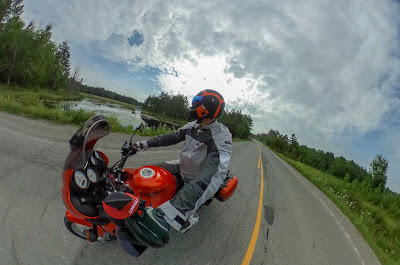Once again I’m thinking about a Morgan3. I found out that Ontario is offering a ten year pilot program for three wheeled vehicles, meaning you can drive one here now. The federal requirements for three wheeled vehicles are just borrowed from other jurisdictions where they are already allowed, so the Morgan should be good to go.
It’s probably the Polaris Slingshot and the like that have forced this to finally happen, but what I really want is that Morgan3. With a big air cooled twin out front and a super wide stance, the Morgan3 is a silly amount of fun to drive and looks like an instant classic rather than the offspring of the USS Enterprise and a TIE fighter. If you want to go fast, get an even number of wheels, but if you want something with character, go odd, and the Morgan3 is nothing if not full of character.
Of course Ontario can’t do anything without making it pointlessly political and difficult, so anyone driving a three wheeled vehicle has to act like it’s a motorcycle and is required to wear a helmet. Like I said, pointlessly officious, it’s the Ontario way.
At least there are some stylish (though probably illegal) options for piloting the Morgan3. A couple of World War 2 inspired fighter helmets along with aviator jackets and we’d be ready to roll.
As it happens, the Morgan factory is but one hundred miles north of us when we’re on holiday in the UK and offers rentals. That might warrant a day trip! There is another option even closer to where we’re staying. Berrybrook is in Exeter, just down the road from the cottage we’re at.
from Blogger http://ift.tt/2uty4cd
via IFTTT




























































